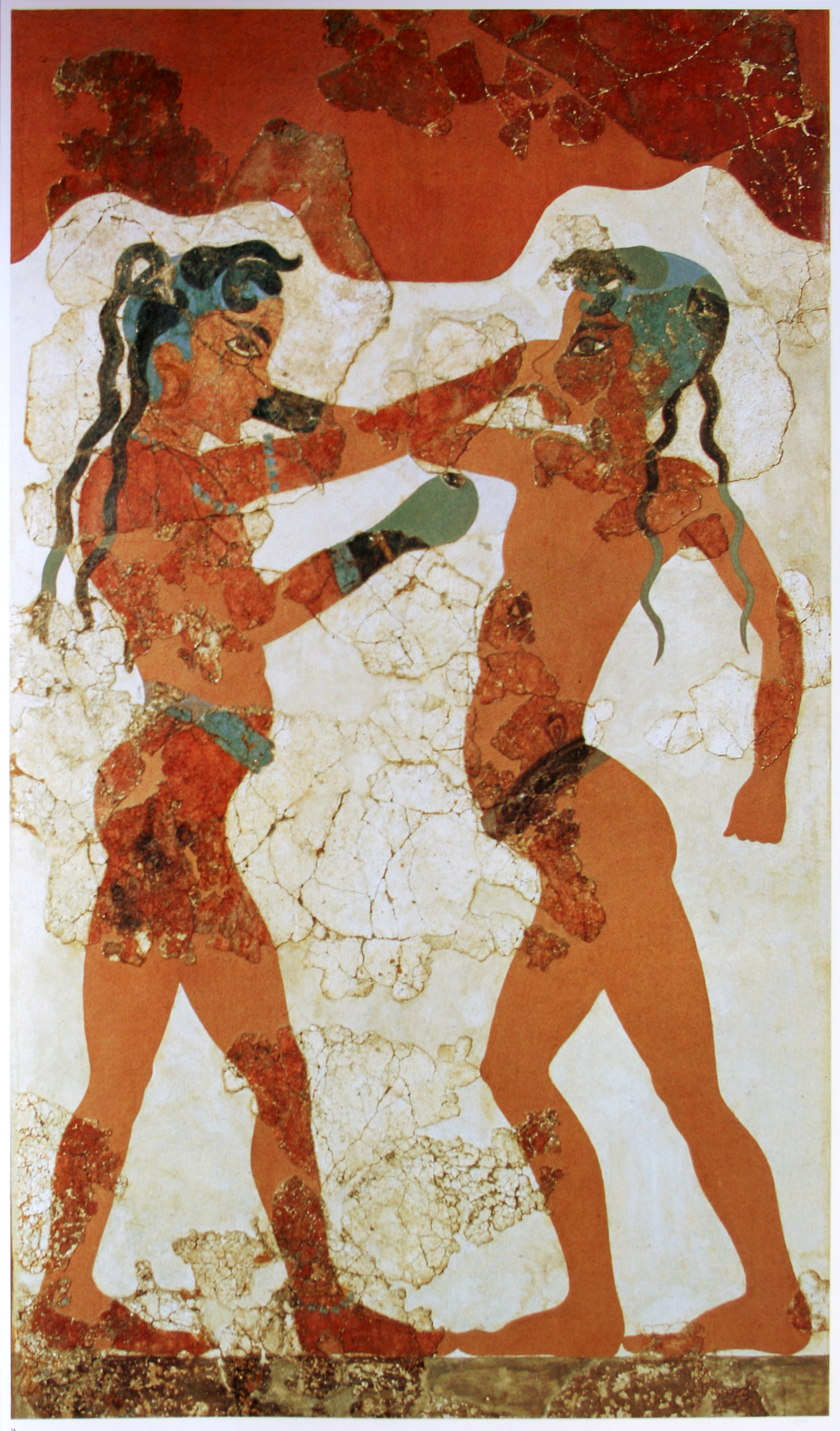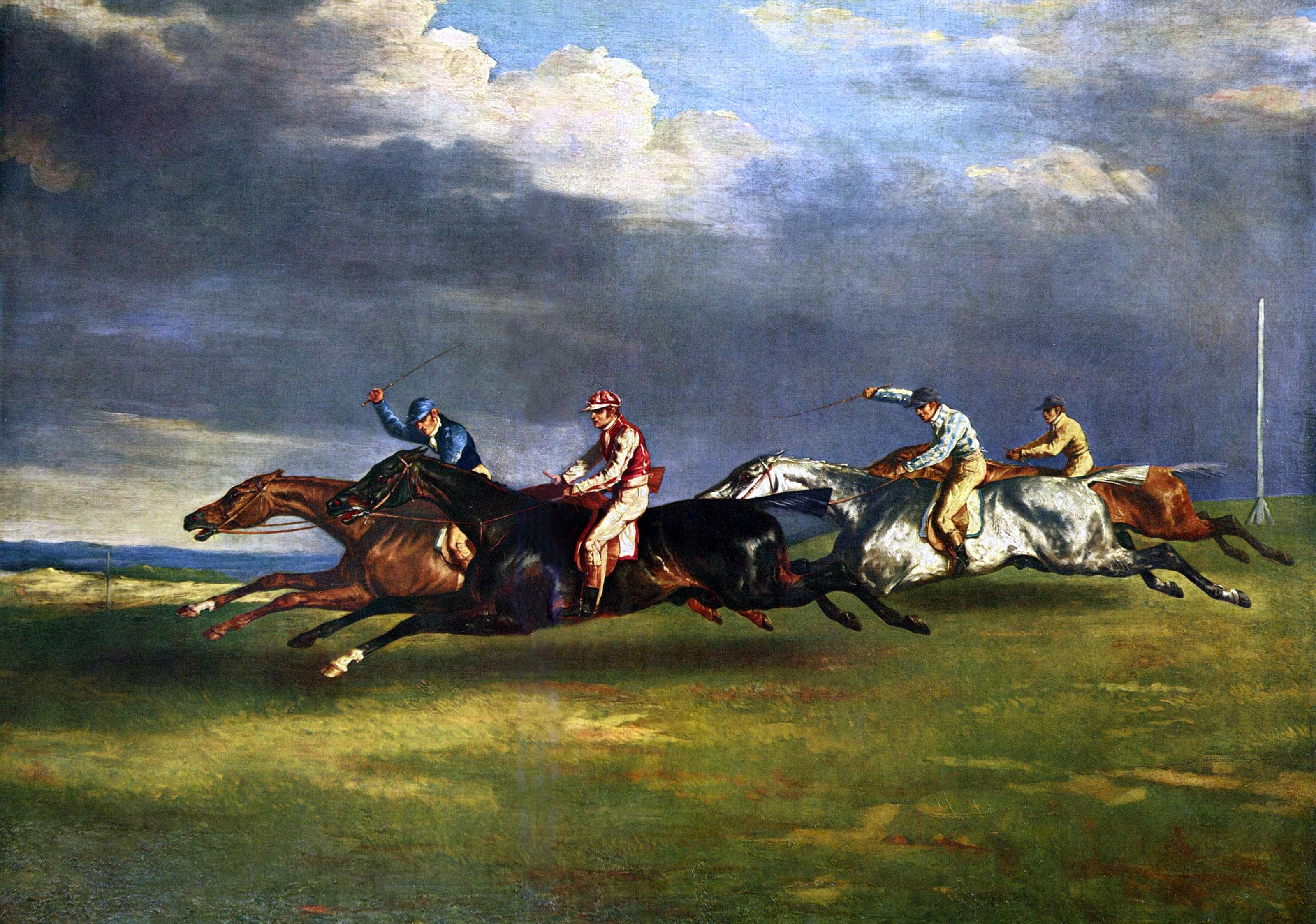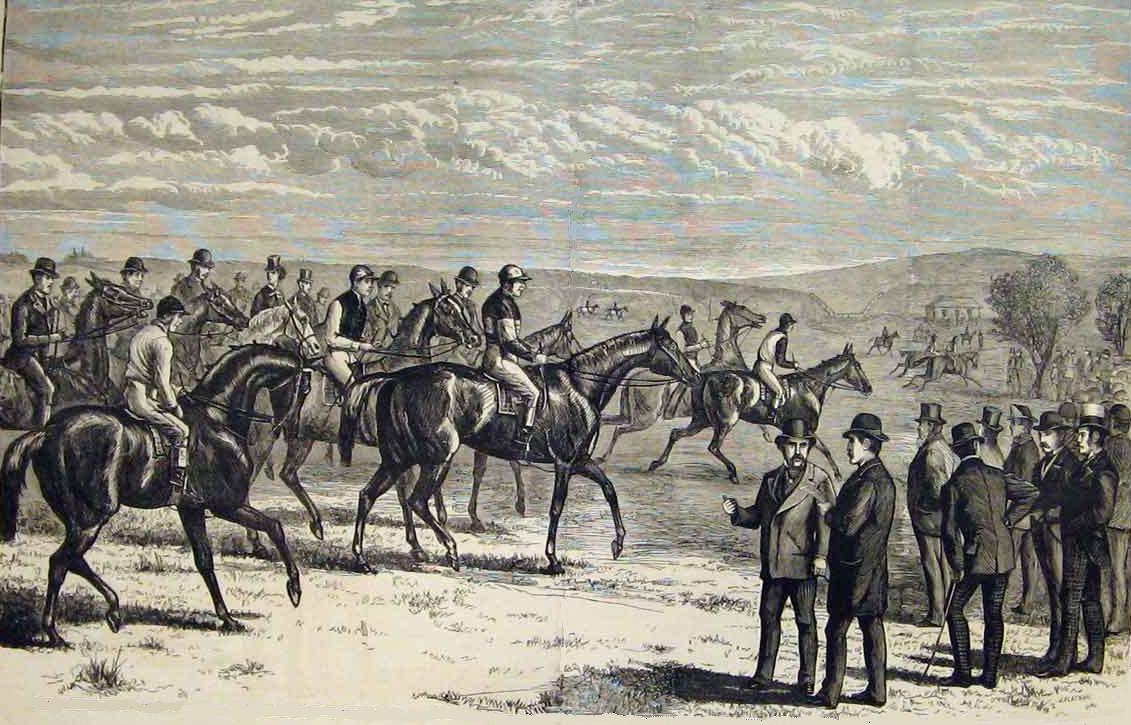|
1819 In Sports
1819 in sports describes the year's events in world sport. Boxing Events * Tom Cribb retains his English championship but no fights involving him are recorded in 1819. Cricket Events * 7 September — death of Lumpy Stevens, arguably the greatest bowler of the 18th century England * Most runsNote that scorecards created in the first quarter of the 19th century are not necessarily accurate or complete; therefore any summary of runs, wickets or catches can only represent the known totals and the missing data prevents effective computation of averages – Thomas Beagley 170 (HS 75) * Most wickets – Thomas Howard 23 (BB 5–?) Horse racing England * 1,000 Guineas Stakes – Catgut * 2,000 Guineas Stakes – Antar * The Derby – Tiresias * The Oaks – Shoveler * St. Leger Stakes – Antonio Artistic gymnastics Germany * The parallel bars (in German Barren) were invented by German Friedrich Ludwig Jahn in Berlin. References {{Sports by year to 1850 1819 Events ... [...More Info...] [...Related Items...] OR: [Wikipedia] [Google] [Baidu] |
Boxing
Boxing (also known as "Western boxing" or "pugilism") is a combat sport in which two people, usually wearing protective gloves and other protective equipment such as hand wraps and mouthguards, throw punches at each other for a predetermined amount of time in a boxing ring. Although the term "boxing" is commonly attributed to "western boxing", in which only the fists are involved, boxing has developed in various ways in different geographical areas and cultures. In global terms, boxing is a set of combat sports focused on striking, in which two opponents face each other in a fight using at least their fists, and possibly involving other actions such as kicks, elbow strikes, Knee (strike), knee strikes, and headbutts, depending on the rules. Some of the forms of the modern sport are western boxing, Bare-knuckle boxing, bare knuckle boxing, kickboxing, Muay Thai, muay-thai, lethwei, savate, and Sanda (sport), sanda. Boxing techniques have been incorporated into many martial ar ... [...More Info...] [...Related Items...] OR: [Wikipedia] [Google] [Baidu] |
Epsom Derby
The Derby Stakes, also known as the Epsom Derby or the Derby, and as the Cazoo Derby for sponsorship reasons, is a Group 1 flat horse race in England open to three-year-old colts and fillies. It is run at Epsom Downs Racecourse in Surrey on the first Saturday of June each year, over a distance of one mile, four furlongs and 6 yards (2,420 metres). It was first run in 1780. It is Britain's richest flat horse race, and the most prestigious of the five Classics. It is sometimes referred to as the "Blue Riband" of the turf. The race serves as the middle leg of the historically significant Triple Crown of British horse racing, preceded by the 2000 Guineas and followed by the St Leger, although the feat of winning all three is rarely attempted in the modern era due to changing priorities in racing and breeding, and the demands it places on horses. The name "Derby" (deriving from the sponsorship of the Earl of Derby) has been borrowed many times, notably by the Kentucky D ... [...More Info...] [...Related Items...] OR: [Wikipedia] [Google] [Baidu] |
Berlin
Berlin ( , ) is the capital and largest city of Germany by both area and population. Its 3.7 million inhabitants make it the European Union's most populous city, according to population within city limits. One of Germany's sixteen constituent states, Berlin is surrounded by the State of Brandenburg and contiguous with Potsdam, Brandenburg's capital. Berlin's urban area, which has a population of around 4.5 million, is the second most populous urban area in Germany after the Ruhr. The Berlin-Brandenburg capital region has around 6.2 million inhabitants and is Germany's third-largest metropolitan region after the Rhine-Ruhr and Rhine-Main regions. Berlin straddles the banks of the Spree, which flows into the Havel (a tributary of the Elbe) in the western borough of Spandau. Among the city's main topographical features are the many lakes in the western and southeastern boroughs formed by the Spree, Havel and Dahme, the largest of which is Lake Müggelsee. Due to its l ... [...More Info...] [...Related Items...] OR: [Wikipedia] [Google] [Baidu] |
Friedrich Ludwig Jahn
(11August 177815October 1852) was a German gymnastics educator and nationalist whose writing is credited with the founding of the German gymnastics (Turner) movement as well as influencing the German Campaign of 1813, during which a coalition of German states effectively ended the occupation of Napoleon's First French Empire. His admirers know him as , roughly meaning "Father of Gymnastics ". Life was born in the village of in Brandenburg, Prussia. He studied theology and philology from 1796 to 1802 at the universities in , , and . After the Battle of Jena–Auerstedt in 1806, he joined the Prussian army. In 1809, he went to Berlin where he became a teacher at the and at the Plamann School. Brooding upon what he saw as the humiliation of his native land by Napoleon, conceived the idea of restoring the spirits of his countrymen by the development of their physical and moral powers through the practice of gymnastics. The first , or open-air gymnasium, was opened by in in ... [...More Info...] [...Related Items...] OR: [Wikipedia] [Google] [Baidu] |
Parallel Bars
Parallel bars are floor apparatus consisting of two wooden bars slightly over long and positioned at roughly head height. Parallel bars are used in artistic gymnastics and also for physical therapy and home exercise. Gymnasts may optionally wear grips when performing a routine on the parallel bars, although this is uncommon. Apparatus The apparatus consists of two parallel bars that are held parallel to, and elevated above, the floor by a metal supporting framework. The bars are composed of wood or other material, with an outer coating of wood. The vertical members of the supporting framework are adjustable so the height of the bars above the floor and distance between the bars can be set optimally for each gymnast. Dimensions *Bar length: ± *Bar rounded profile: ± vertical by ± horizontal *Bar width: ± *Height of bar from floor: ± *Distance between bars: – (adjustable) History The parallel bars (in German ''Barren'') were invented by Friedrich Ludwi ... [...More Info...] [...Related Items...] OR: [Wikipedia] [Google] [Baidu] |
Artistic Gymnastics
Artistic gymnastics is a discipline of gymnastics in which athletes perform short routines on different apparatuses. The sport is governed by the Fédération Internationale de Gymnastique (FIG), which designs the Code of Points and regulates all aspects of elite international competition. Within individual countries, gymnastics is regulated by national federations like British Gymnastics and USA Gymnastics. Artistic gymnastics is a popular spectator sport at many competitions, including the Summer Olympic Games. History The gymnastic system was mentioned in writings by ancient authors, including Homer, Aristotle, and Plato. It included many disciplines that later became independent sports, such as swimming, racing, wrestling, boxing, and horse riding. It was also used for military training. In its present form, gymnastics evolved in Bohemia and what is now known as Germany at the beginning of the 19th century. The term "artistic gymnastics" was introduced to distinguish fr ... [...More Info...] [...Related Items...] OR: [Wikipedia] [Google] [Baidu] |
Antonio (horse)
Antonio (1816–1828) was a British Thoroughbred racehorse and sire best known for winning a controversial race for the classic St Leger Stakes in 1819. The classic was run twice after claims of an irregular start, but Antonio's victory in the original running was eventually allowed to stand. The rest of his racing career, which lasted from April 1819 until May 1822 was relatively undistinguished although he won five other races. After two minor successes in 1820 he missed the whole of the 1821 before returning as a six-year-old to win two races at Chester. He was then retired to stud where he had limited success as a sire of winners before his death in 1828. Background Antonio was a bay horse with a white star and snip and white socks on his hind feet bred by James Ferguson, an innkeeper from Catterick Bridge. His dam was an unnamed mare sired by Evander, a stallion who was exported to Russia in 1813. Antonio was one of only two classic winners produced by Thoroughbred fami ... [...More Info...] [...Related Items...] OR: [Wikipedia] [Google] [Baidu] |
Epsom Oaks
The Oaks Stakes is a Group 1 flat horse race in Great Britain open to three-year-old fillies. It is run at Epsom Downs over a distance of 1 mile, 4 furlongs and 6 yards (2,420 metres), and it is scheduled to take place each year in late May or early June. It is the second-oldest of the five Classic races, after the St Leger. Officially the Cazoo Oaks, it is also popularly known as simply The Oaks. It has increasingly come to be referred to as the Epsom Oaks in both the UK and overseas countries, although 'Epsom' is not part of the official title of the race.) It is the third of Britain's five Classic races to be held during the season, and the second of two restricted to fillies. It can also serve as the middle leg of the Fillies' Triple Crown, preceded by the 1000 Guineas and followed by the St Leger, although the feat of winning all three is rarely attempted. History The event is named after ... [...More Info...] [...Related Items...] OR: [Wikipedia] [Google] [Baidu] |
Tiresias (horse)
Tiresias (1816–1837) was a British Thoroughbred racehorse and sire. In a career that lasted from April 1819 to July 1820 he ran thirteen times, all but two of them at Newmarket and won eleven races. Both of his defeats came when he was attempting to concede weight to opponents in match races. His most important win came in May 1819 when he won the Derby. Tiresias's racing career was ended by injury in the summer of 1820, after which he was retired to stud. Background Tiresias was a brown horse standing 16 hands high bred by his owner William Bentinck, 4th Duke of Portland a leading member of the Jockey Club who owned much of the land around Newmarket Racecourse. Nicknamed "The Farmer Duke", Portland bred horses at his stately home at Welbeck Abbey in Nottinghamshire. Tiresias was sired by Soothsayer, who won the St Leger in 1811 and went on to be a successful stud horse, being the Leading sire in Great Britain and Ireland in 1819. Apart from Tiresias, his most notable winn ... [...More Info...] [...Related Items...] OR: [Wikipedia] [Google] [Baidu] |
2,000 Guineas Stakes
The 2000 Guineas Stakes is a Group 1 flat race in Great Britain open to three-year-old thoroughbred colts and fillies. It is run on the Rowley Mile at Newmarket over a distance of 1 mile (1,609 metres) and scheduled to take place each year at the start of May. It is one of Britain's five Classic races, and at present it is the first to be run in the year. It also serves as the opening leg of the Triple Crown, followed by the Derby and the St Leger, although the feat of winning all three has been rarely attempted in recent decades. History The 2000 Guineas Stakes was first run on 18 April 1809, and it preceded the introduction of a version for fillies only, the 1000 Guineas Stakes, by five years. Both races were established by the Jockey Club under the direction of Sir Charles Bunbury, who had earlier co-founded the Derby at Epsom. The races were named according to their original prize funds ( ... [...More Info...] [...Related Items...] OR: [Wikipedia] [Google] [Baidu] |
Tom Cribb
Tom Cribb (8 July 1781 – 11 May 1848) was a world champion English bare-knuckle boxer of the 19th century. Cribb was born near Bristol but moved to London before starting professional fighting. He undertook a series of fights between 1805 and 1812 when he retired, becoming a coal merchant and then publican. His career has been commemorated with the name of a pub and in literature. Early life Born in Wick near the Hanham area of Bristol, Cribb moved to London at the age of 13 and after working as a bell-hanger he sought work as a coal porter in Wapping. Boxing career His first fight was with George Maddox on 7 January 1805 at Wood Green in Middlesex, now part of north London. Victory here, over Maddox, followed by another a month later, over Tom Blake persuaded him to become a professional pugilist, under the supervision of Captain Robert Barclay. George Nicholls was the only fighter to defeat Cribb, on 20 July 1805. Later, the foremost prizefighting reporter, Pierce Egan, ... [...More Info...] [...Related Items...] OR: [Wikipedia] [Google] [Baidu] |
Catgut (horse)
Catgut (foaled 1816) was a British Thoroughbred racehorse and broodmare who won the classic 1000 Guineas at Newmarket in 1819. The Guineas was the filly's only competitive win in six races, her other victory coming when she was allowed to walk over on her racecourse debut. Background Catgut was a brown mare bred by her owner George FitzRoy, 4th Duke of Grafton at his stud at Euston Hall in Suffolk. Her dam, Vanity, was bred by the 4th Duke's father Augustus FitzRoy, 3rd Duke of Grafton and won twelve races before being retired to stud. In 1815 the mare was covered by two stallions, Comus and the less well-known Juniper. Comus finished third in the Derby and sired many good horses including the classic winners Grey Momus and Reveller. Juniper was a "useful" stallion, best known as the sire of Camarine and the damsire of Velocipede. Grafton sent the filly to be trained at Newmarket by Robert Robson, the so-called "Emperor of Trainers". Racing career 1819: three-year-old seaso ... [...More Info...] [...Related Items...] OR: [Wikipedia] [Google] [Baidu] |







